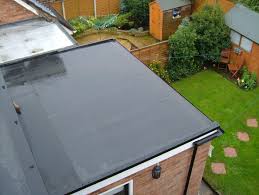We tell you how to waterproof roofs and what are the different membrane options that you can use to leave your home well protected.
Roofs and roofs are the parts of a house that are most exposed to the incidence of climatic factors, something that, over time, affects its good condition and function. To prevent or solve problems that lead to leaks and moisture stains, it is essential to periodically carry out waterproofing treatments. There are several types of roofing membranes that you can use for this task.
Types of roofing membranes
Table of Contents
A membrane is an element that, in addition to giving a roof all the waterproofing it needs, allows it to withstand the physical, chemical and mechanical demands caused by climatic action.
When choosing between the different waterproofing treatments, it is necessary to take into account several aspects to choose the most suitable in each case. You have to evaluate from the material and the design of the roof – it is not the same if it is gabled, with a good drop or flat – to the climatic characteristics where you live. In the market you can find different types of membranes :
- Asphalt membrane for roofs : it is a pre-made waterproofing barrier made up of several layers of materials that give it resistance and elasticity.
- Liquid membrane for roofs : it is a product that stops water and prevents its passage by reducing the porosity of the concrete, filling the leaks and isolating the moisture from the material.
- Sheet roof membrane : for this type of roofing, the use of an Asphalt Membrane made with Plastic Asphalt and with an aluminum composite coating is recommended. You can also use some type of special paint for galvanized sheet .
Let’s see the characteristics and qualities of each type of roof membrane .
Asphalt roofing membrane
The asphalt membrane is a water-repellent element made up of several layers of materials that together make up a unique waterproofing system. It is composed of 3 basic elements: the primer, the asphalt layer and the finish or coating.
- The primer must be done prior to the placement of the pre-made membrane. It is an asphalt paint that is applied on the roof and then the membranes adhere to it.
- The asphalt layer is the most important part of the pre-manufactured membrane, which will give it its physical and mechanical resistance conditions. In this sense, membranes with total thicknesses greater than 3.5 mm and a minimum total weight of 4 kg / m2 are those that ensure good operation.
- The coating is the last layer and its function is to protect the asphalt body of the membrane from climatic actions and, in certain cases, allow pedestrian traffic.
There are 3 types of asphalt membranes that differ from each other by the characteristics of the coating they have:
- Membranes with Aluminum coating (Not passable) : the aluminum film that covers this type of products increases the mechanical resistance of the membrane in extreme weather conditions. In addition, it extends the useful life of the product and provides greater security to the waterproofing system. Although it is flexible, it can easily break and is therefore not suitable for traffic.
- Membranes with Geotextile Coating (Walkable): The geotextile is a mesh composed of synthetic fibers mainly of polypropylene and polyester. It also has resins that increase its mechanical properties and its adherence to the asphalt layer. Provides asphalt membranes with optimal resistance to impact, puncture and abrasion produced by foot traffic. Once applied, the surface must be painted with a liquid membrane.
- Normal membranes without aluminum : they are developed to be placed under the cement and sand folder on which some type of floor or finish will be installed later. In case they are left in the open, they need additional protection, which will depend on the use that is given to the terrace where it was applied.
Liquid roofing membrane
It is one of the best treatments for waterproofing roofs . Its application is very simple, since it is a type of membrane that is applied with a brush or roller and, when drying, forms a thick elastic layer with a high water-repellency.
Elasticity is one of its most notable aspects, since, since the roofs are the element of the house most exposed to the cold or the sun’s rays, they suffer a greater expansion than other sectors of the house.
The imperceptible changes and movements caused by expansion end up causing cracks and marks where leaks occur. The elasticity of this material then allows the membrane to adapt to these transformations and completely seal the ceiling.
Manufacturers of waterproofing products have developed several of these membranes from numerous compounds. Let’s see some of the most recommended:
- Sinteplast liquid membrane : this brand offers different options that vary according to the materials with which they are made, but the one that stands out is the one made with a water-dilutable acrylic coating. It is essential to apply it with the recommended thickness so that it forms an extremely elastic film, resistant at a mechanical level and in relation to climatic factors. It has a useful life of 10 years, which makes it an efficient choice in economic terms. It works perfectly on both flat and sloped roofs and, as it comes in different colors, it can even be applied on exposed terraces.
- Sika Sikafill Thermal Membrane : this product is reinforced with fiber microspheres that improve the thermal insulation capacity and cover cracks. This insulation is also helped by the fact that, once dry, it forms a waterproof coating with high reflectivity of solar radiation. Its benefits also include the ease of cleaning, the speed of application and the possibility of cold application.
- Fiber plavicon : it is an acrylic waterproofing made with water-based fibers incorporated, formulated based on crosslinking polymers curing by UV (ultraviolet) effect. It forms a reinforced membrane of great elasticity and great resistance to abrasion, which prolongs its useful life.
- Venier Liquid Membrane – This brand manufactures an air-drying waterproofing coating formulated with rubber, UV filters and embedded fibers that is highly effective. Forms a waterproof and elastic film. Its high content of solids and its great consistency allow to achieve high thickness films, which can be applied on horizontal surfaces and on vertical faces with excellent results. A great advantage is that it is fully walkable.
How to insulate a sheet metal roof
Waterproofing a sheet metal roof may seem like a complicated task, but, in reality, we can use some of these products and perfectly insulate our house, protecting it from leaks and humidity. We tell you how to do it:
-
- Inspection and cleaning: the first step is to clean the entire ceiling until there are no grease, dust, fungus or moisture stains. In addition, it is necessary to verify that it is in good condition, without dents or unevenness.
- Priming: primer the surface with solvent-based Asphalt Paint to ensure that the membrane adheres to the sheet.
- Drying : now you must wait a while to let the primer dry and be able to work on it.
- Membrane placement : then the asphalt membrane can be completely glued (with a torch), trying to copy the shapes of the surface with the membrane. In this way the resistance and durability of the waterproofing is ensured.
- Sealing : to conclude, the joints should be painted with aluminized asphalt paint to protect the asphalt and prevent its premature deterioration.

